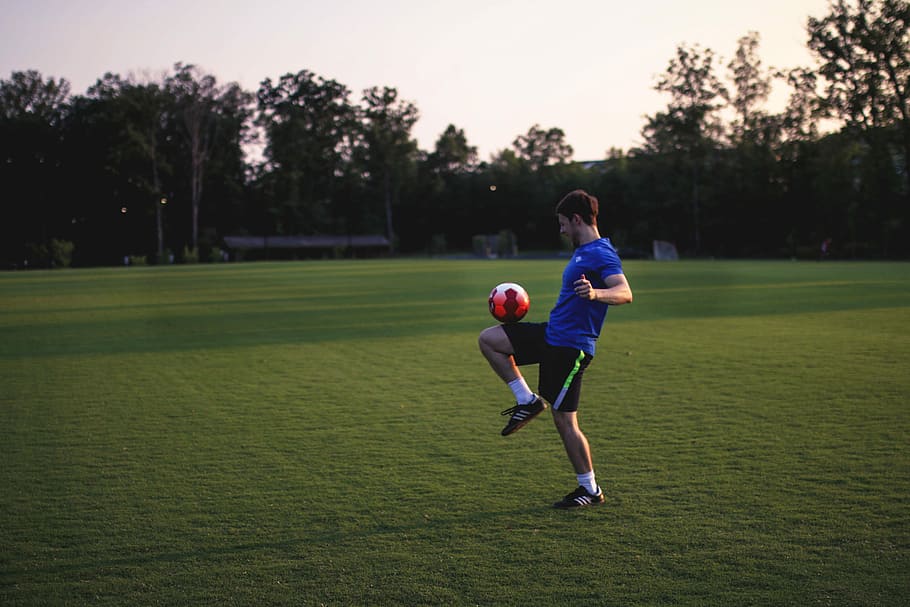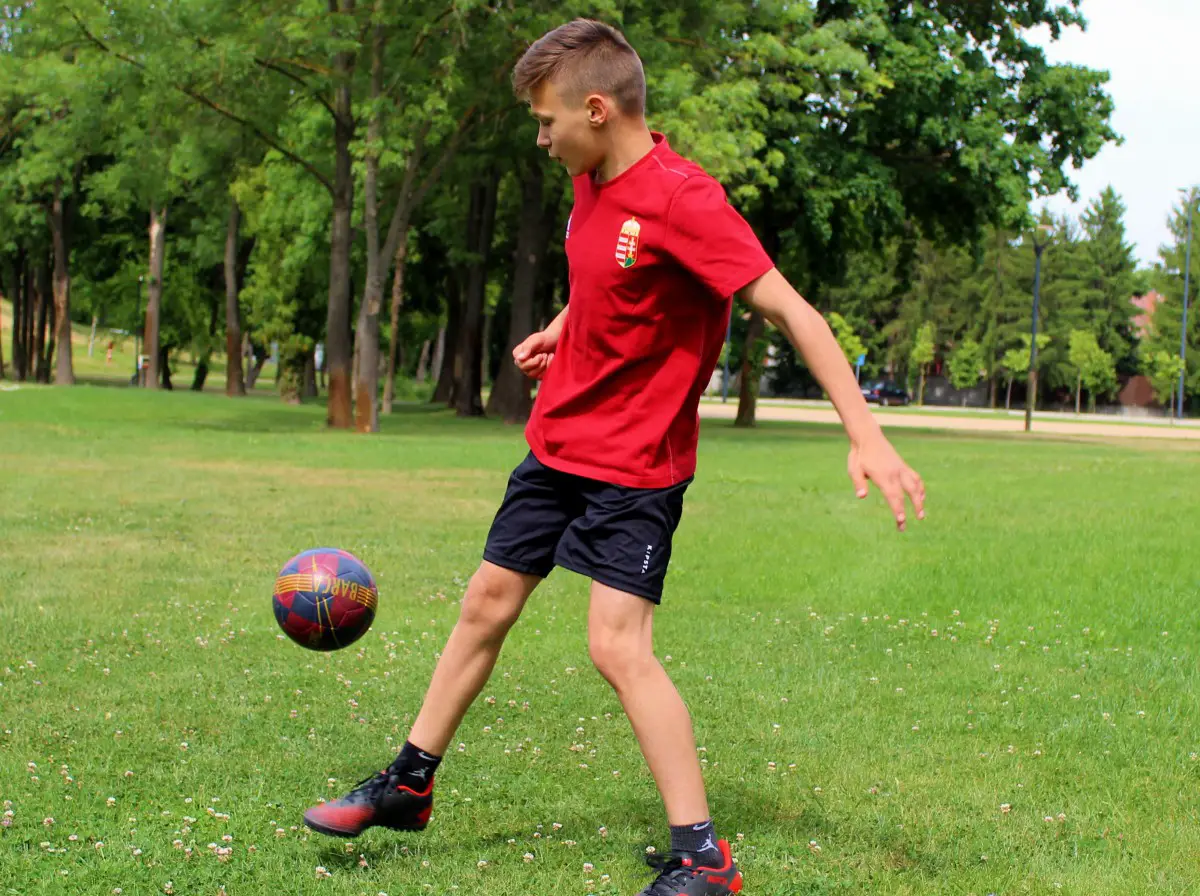 Juggling the soccer ball is a good way to kill a few free minutes or challenge your friend to a quick competition.
Juggling the soccer ball is a good way to kill a few free minutes or challenge your friend to a quick competition.
But since you don’t juggle in a game, can it really make you a significantly better player on the field?
Yes, and in more ways than you might realize. Specifically, it helps improve your touch and balance, which both have tremendous impacts on your performance. Let’s dig a little deeper into why this is the case.
1. Touch
Sure, you won’t be bounding down the field evading defenders in a game all while keeping a juggle going, but the skill does come into play frequently. For example, think of an airball that comes to you at an odd angle, or a cross that bounces just in front of you.
Practicing juggling helps you perfect your touch so you can better control balls coming at you from all heights and in all situations. And in addition, you’ll notice that your improved touch makes it far easier to do things like weigh your passes properly and keep control of the ball while dribbling.
Overall, getting in as many touches as possible is one of the best things you can do to improve your play, and it’s hard to imagine an exercise that will get more touches in quickly than juggling.
2. Balance and Agility
Another major benefit of juggling is improving your balance and agility. To succeed in soccer you need to be able to keep your body in control and make quick adjustments and changes of direction. You need to be able to pull of a move seamlessly without losing speed or stumbling.
Juggling regularly, in particular switching quickly from left to right foot, helps greatly in this regard. Improved rhythm is another benefit: juggling will improve your “foot-eye” coordination so your movements will be more in-sync.
In addition, practicing juggling also helps you hone your focus, concentration and discipline, all important attributes for soccer players.
Best Ways to Practice Juggling
Juggling at its core is about as simple an exercise as you can imagine–just kick the ball up and don’t let it hit the ground–but there are endless variations and plenty of ways to keep it fresh and challenging.
Here are a few ideas if you’re ready to move past the basic juggle.
- Juggling with only your non-dominant foot for as long as you can
- Juggling in a set sequence (for example, right foot, right thigh, head, left thigh, left foot, repeat)
- Juggling with no spin (or topspin, or sidespin)
- With a partner, juggling for a set number of touches before sending a ball chest-high to your teammate who does the same
- Juggle while you are jogging forward
- Challenging yourself to reach a certain number of juggles, such as 100
- Juggling a set number of times, then catching the ball on the top of your foot and holding it there for a couple of seconds before resuming juggling
- Juggling while keeping the ball below your waist at all times (or above your head, or some other height)
Do you know of any other techniques for practicing juggling? If so, let us know in the comments.






Great tips here! Most see juggling as a game or something to pass the time during down time. Glad that you express the importance of this skill. It will come into play often during competition. Thanks for sharing!
Thanks for the comment. It definitely does come into play during competition more than a lot of players think.